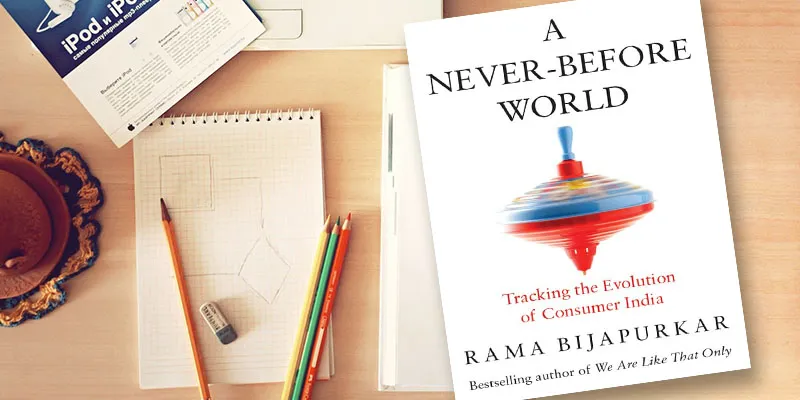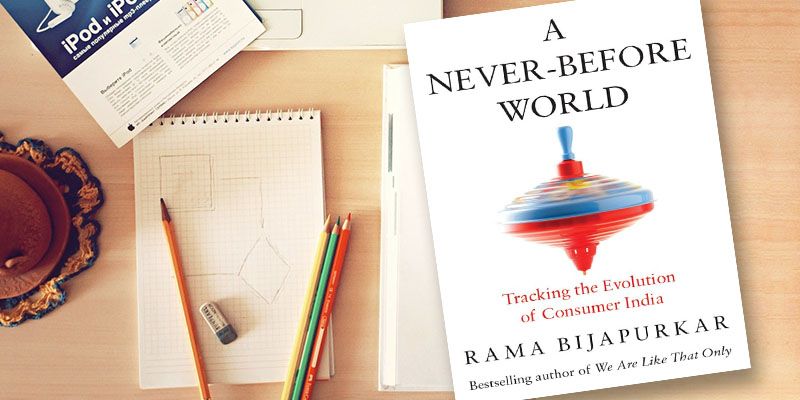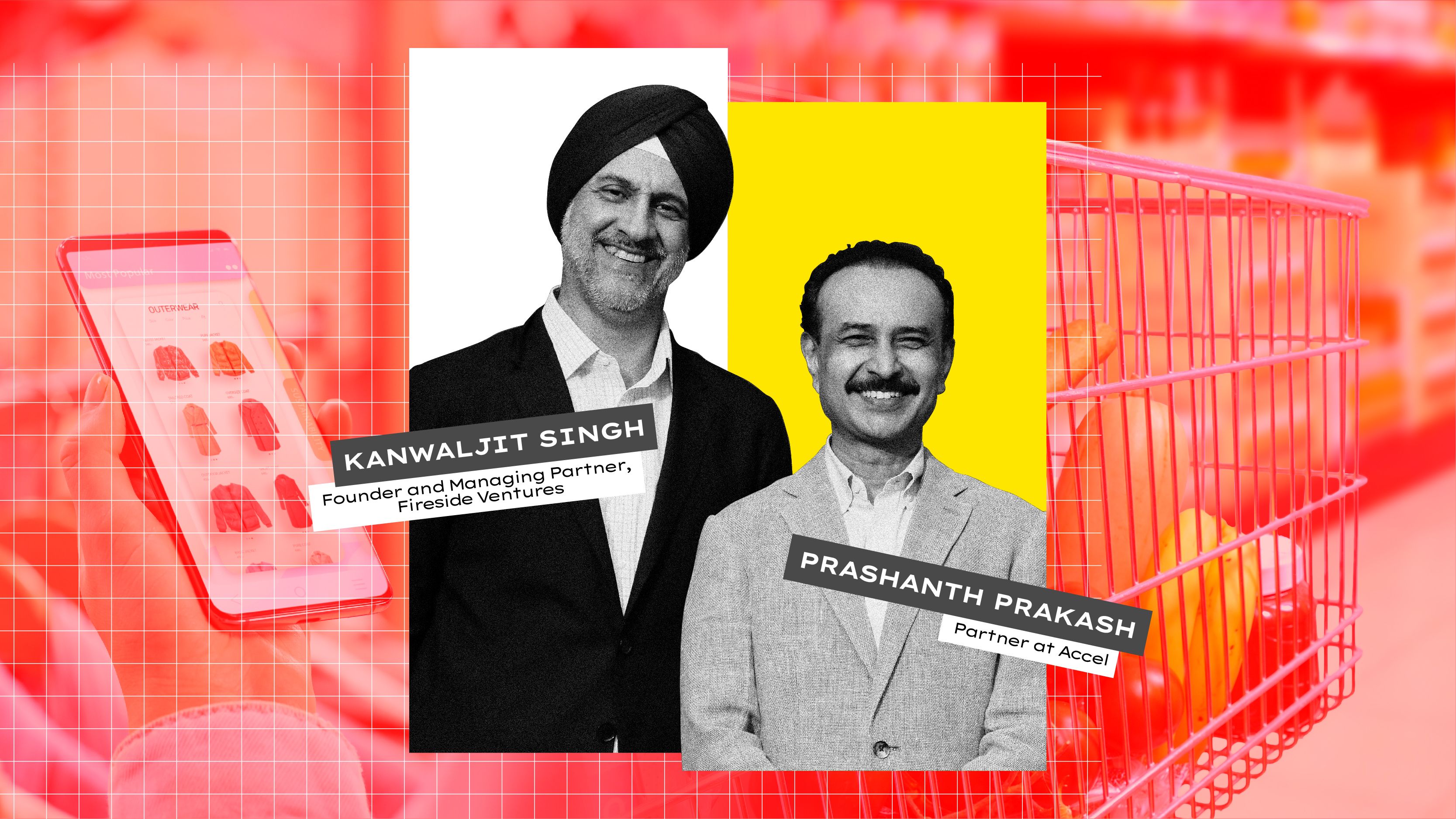Rama Bijapurkar’s 15 tips for succeeding in consumer India
In the next decade, India may add another India to itself in terms of GDP. Currently its GDP is close to $2 trillion, and 55-65 per cent of that is domestic consumption. India has entered the third decade after liberalisation, buffeted by changes on all fronts: consumption structures, consumer behaviours, citizen aspirations, digital media and the youth boom.
Emerging markets such as India are a never-before world as compared to Western markets or smaller countries, and businesses need to understand the environment in which these consumers live, how they think, how heterogeneous they are, what they value and how they are changing.

Five years after her bestseller We Are Like That Only, Rama Bijapurkar takes stock of India’s economy in her new book, A Never-Before World: Tracking the Evolution of Consumer India. She urges businesses and entrepreneurs to focus not just on how much money people have, but on their aspirations, pain points, community context and media usage.
The 13 chapters are spread across 354 pages, and illustrated with charts, tables, summaries from other research reports and Bijapurkar’s own unique provocative insights. “Never before has there been a market so globally connected and so connected at the same time with its ancient past,” she observes. Here are my Top 15 takeaways from her book for companies to tap into India’s consumer boom.
1. Ask the right questions
Instead of asking ‘what is the India market for my strategy’ companies should be asking ‘what is my strategy for the India market.’ MNCs will find that tweaking existing templates from the West or other emerging economies won’t work well in India, and India’s growth path will not be like the West. Indian corporate themselves need to think afresh and learn from startups and micro-entrepreneurs. ‘Do it yourself’ approaches to activities and services may work well in the US – but many Indians also prefer ‘Do it for me.’ As the late great C.K. Prahalad remarked, MNCs will change emerging markets forever, but emerging markets will also change MNCs forever.
2. Recognise the contradictions
India is the land of ‘many opposing truths,’ and the book does a great job of pulling out the contradictions in India’s growth story at several levels. India is the ninth largest economy in the world, but ranks 139 in per capita GDP; it is the poorest among the G20 nations, and even in the BRICS group. Indian railways is the country’s largest e-commerce retailer but runs trains which are dirty and technologically deficient (look at the the reports on train accidents). Despite the boom in home gadgets and tools, most floors are still swept on hands and knees. Indian culture today has characteristics of both indulgence and restraint.
3. Deal with diversity
“Never before has there been a consumer base that lives over four centuries at the same time, a market with so many people sadly caught between a twenty-first century economy and an eighteenth-century society,” says Bijapurkar. She traces the rise of the new ‘culture classes’ such as global citizens, prospering small businessmen, IT kids and cause-conscious activists. English is booming, but so are local language media. Consumers choose a ‘garland of brands,’ a ‘mosaic of tradition and modernity.’ Profundity and pragmatism co-exist, in a manner seen by outsiders as almost schizophrenic. There are many mini-India’s which fragment and also fuse in interesting ways, eg. ‘rurban’ consumers. Changes in India are more of the ‘morphing’ kind (amoeba like) than the ‘moulting’ kind (butterfly like). Individualism is rising but so is social cohesion; while people of other countries have seven degrees of separation between them, Indians have seven degrees of connection between them!
4. Design for digital media
The central nervous system for the US has been the automobile – for India it is the cellphone. Indians have appropriated digital media into their own social and cultural contexts, with online shrines and prayers. Cloud computing is opening up pay-as-you-use models for individuals and SMEs to use tools such as Adobe’s design software, instead of paying high up-front costs or resorting to pirated software. The new level of high digital quotient presents new opportunities for overhauling old B2C and B2B business models and also creating new ones for startups, as seen in Flipkart and Redbus. India has ‘monster consumers’ who want high quality at a low price, from a wide range of mix-and-match suppliers.
5. Ride the youth boom
The median age of India is 26.7 years. India has 600 million citizens below the age of 25, raised in a heady environment of rising incomes, aspirations, freedom of thought and speech, and an overactive media. They see themselves as destination driven, not destiny driven. The sky is their limit and the globe is their playground -- but opportunity needs to feed the optimism. There are also 200 million youth who are unskilled and there are no good jobs for them. Many youth are seeing incomes growing fourfold in just one generation, with spending patterns of forty-year olds in the previous generation matching twenty-year olds of the current generation. Though many are frustrated with corruption and red tape, there will be no major revolution coming from them. India is also a child-obsessed country, with one child in most homes.
6. Provide private goods to make up for gaps from public providers
Due to the spectacular failure of many public institutions and services, people will buy public goods from private providers. Inadequate infrastructure has been a real spoiler in India, and though incomes and inspirations are rising, the quality of life is not. Clean water, good schools and decent healthcare may increasingly be from the private sector – and therefore hit consumption of other goods. Consumer rights will deliver what citizen rights do not.
7. Blend research with insights
Look not just at the mega-studies but also do your own skilful micro-level market research. Blend household-surveys with supply-side sales indicators. India’s so-called middle-class is actually the upper class, the top 20 per cent of households by income. The Indian middle class is still poorer than the middle class in many other countries. Poverty thresholds levels are defined differently by different organisations. A range of classifications is used here, such as SEC A-E; seekers, strivers, globals, aspirers (McKinsey); and by quintiles (household income in 20 per cent slabs).
8. Understand urban markets
Urban markets are opening up opportunities for those with social capital and not just economic capital. Urban Indians work hard and party hard. ‘Intrepid entrepreneurs’ are spotting opportunities in areas such as unique gadgets for Indian kitchens, new retail formats, and even dog walking. At the same time, 25 per cent of the urban population lives in slums. Bijapurkar offers a new classification for Indian cities: megalopolis (10+ million population: Mumbai, Delhi, Kolkata), metros (5-10 million: Bangalore, Hyderabad, Ahmedabad, Chennai, Pune), ten mini-metros (2-5 million), 35 large cities (1-2 million), 418 small towns (0.1-1 million), and 7,467 micro-towns and rurban towns.
9. Understand rural India too
Rural India has 70 per cent of India’s population and 12 per cent of the world’s population. Urban-rural aspirations and behaviours are blurring and a middle band called ‘rurban’ has emerged in townships which are now classified as urban (at least 75% of the eligible male population is not engaged in agriculture). Per capita rural GDP of India has grown faster than urban since 2000. Half of well-off India lives in rural India, but most of poor India also lives in rural India. Rural consumers want entertainment and life-improving conveniences (flashlights and squeaky shoes from China are popular!). “The idea that knowledge can give power and status beyond gadget ownership is now well understood in most of rural India, with women too seeking it,” says Bijapurkar, observing use of mobiles for price discovery and ICTs for better farm productivity.
10. Power the rise of Women India
“Women in India have changed the most as a result of both social and economic change in the past decade,” observes Bijapurkar. Women are more visible now at the corporate and government levels, and there may soon be reservations for women in Parliament. Online and in the streets, women are protesting against the atrocities and biases against them. From the consumer lens, they have become earners to help meet the EMI boom, though some parents seem to prefer that they take up ‘jobs not careers.’ Bijapurkar segments Indian women into breakout liberals, freedom fighters, unbound but not free, trendy traditionalists and breadwinners. But workforce participation of women is a mere 14 per cent in urban India and 27 per cent in rural India.
11. Learn from big companies who got it right
Among giant companies, only a few seem to be getting the India strategy right: Nokia, GE, MTV, Cargil, Philips, Pepsico, P&G and Unilever. They have designated India and China as ‘standalone’ regions and made efforts to design customised ‘for India’ businesses. The ‘3 Ns’ – Nirma, Nokia, Nano – have shown the way to get the ‘religion and ritual’ of innovation right for the India market.
12. Learn from countries who got it right
China ‘gets it’ -- it seems to have understood the price-value point very well, for domestic and international markets. Look at all the ‘China bazaars’ across the length and breadth of India, many consumers are quite happy with their ‘good enough’ quality and practical conveniences. Even its ‘squeaky shoes’ are reportedly used to scare away snakes while walking in rural areas! (China’s hardware strengths will also bode well for the success of its ‘Internet of Things’ or IoT market – see the B2C and B2B angles in my earlier article on IoT in India).
13. Act now
Many companies have a ‘classes first, masses later’ strategy where they wait for income levels to rise so that goods earlier seen as expensive become affordable later. However, they miss out on growth and run the risk of becoming obsolete by new kinds of products. PC makers in India who waited for people to become richer and buy PCs later have been sidelined by the arrival of smartphones and tablets. So don’t just look at the income story – look at the technology story and the growth story.
14. Learn from startups and micro-entrepreneurs
Startups and micro-entrepreneurs have far greater consumer insights than many big companies, but they have challenges of their own in terms of access to scaling funds and mentorship. Suppliers and small entrepreneurs are ready for the changes and are driving it, but large suppliers and manufacturers are still behind the curve. Visionaries should look at solving not just big problems but small problems too. “Market creators think of doing what no one else thinks, with that which everybody sees,” observes Bijapurkar. Success will come from ecosystem thinking, not just portfolio strategy.
15. Immerse in Consumer India and come up with ideas for new products and services
All the above trends and insights reveal a market for new kinds of products and services, which Bijapurkar hints at: TVs with in-built VCD players (instead of expensive DVDs), orthopaedic back-protecting seats in cars for pain relief in bumpy roads, cheap biodegradable diapers which don’t need flushing for disposal, low-cost waterproof sprays for roofs, better water storage mechanisms, cheaper larger cooling boxes for vegetables, opthalmologically tested kohl pencils for women, lower cost and lower power airconditioners, cheaper ‘thinsulate’ clothes for northern winters, new kinds of affordable mouthwash, head-rests rather than arm-rests in back doors of cars so passengers can sleep during long commutes, mid-range hotel chains, more pay-as-you-use services, and new offerings for the silver generation. She also proposes a range of devices that can deal with power cuts: TVs with built-in inverters, community battery grids and battery-operated kitchen mixies.
Long-term success requires a willingness to innovate for India, and building the capacity to innovate. “The real consumption journey of India is yet to begin,” sums up Rama Bijapurkar. The real race has not yet begun, and no winners have been declared as yet.
Author profile:
Rama Bijapurkar is a renowned thought leader on market strategy and India's consumer economy, and an insightful commentator on the social and cultural changes that are transforming India. She has her own consulting practice and is a prolific writer on customer centricity in business strategy development. Her corporate board director experience includes Infosys, Bharat Petroleum, Axis Bank, Godrej Consumer Products, CRISIL, ICICI Prudential Life Insurance, Mahindra and Mahindra Financial services, and Titan Industries. She graduated from IIM Ahmedabad and has published books such as We are like that only: Understanding the Logic of Consumer India (in English, Hindi, Chinese) and Customer in the boardroom? Crafting Customer-Based Business Strategy.











